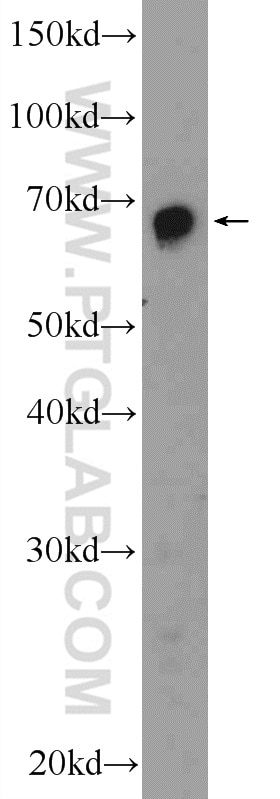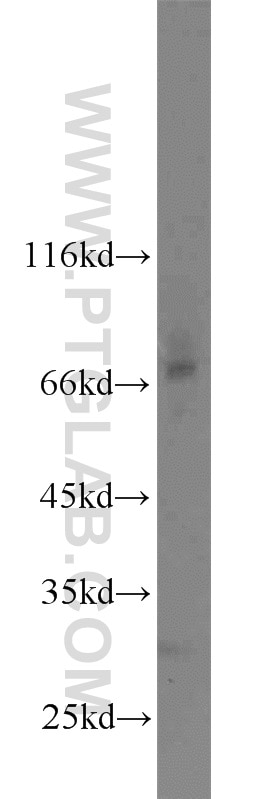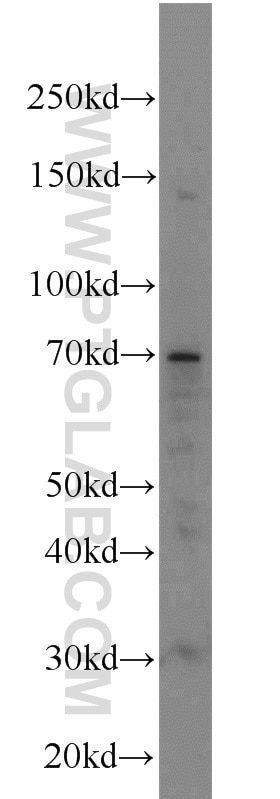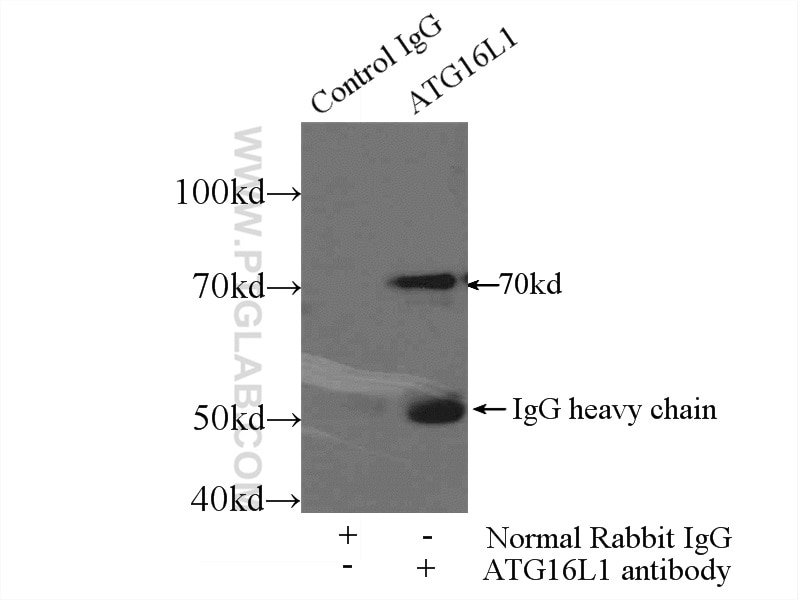Anticorps Polyclonal de lapin anti-ATG16L1
ATG16L1 Polyclonal Antibody for WB, IP, ELISA
Hôte / Isotype
Lapin / IgG
Réactivité testée
Humain, souris et plus (2)
Applications
WB, IP, IF, IHC, CoIP, ELISA
Conjugaison
Non conjugué
N° de cat : 19812-1-AP
Synonymes
Galerie de données de validation
Applications testées
| Résultats positifs en WB | tissu splénique de souris, cellules HEK-293T, cellules Jurkat, cellules MCF-7 |
| Résultats positifs en IP | cellules MCF-7 |
Dilution recommandée
| Application | Dilution |
|---|---|
| Western Blot (WB) | WB : 1:200-1:1000 |
| Immunoprécipitation (IP) | IP : 0.5-4.0 ug for 1.0-3.0 mg of total protein lysate |
| It is recommended that this reagent should be titrated in each testing system to obtain optimal results. | |
| Sample-dependent, check data in validation data gallery | |
Applications publiées
| WB | See 14 publications below |
| IHC | See 1 publications below |
| IF | See 2 publications below |
| CoIP | See 1 publications below |
Informations sur le produit
19812-1-AP cible ATG16L1 dans les applications de WB, IP, IF, IHC, CoIP, ELISA et montre une réactivité avec des échantillons Humain, souris
| Réactivité | Humain, souris |
| Réactivité citée | rat, Humain, porc, souris |
| Hôte / Isotype | Lapin / IgG |
| Clonalité | Polyclonal |
| Type | Anticorps |
| Immunogène | ATG16L1 Protéine recombinante Ag13844 |
| Nom complet | ATG16 autophagy related 16-like 1 (S. cerevisiae) |
| Masse moléculaire calculée | 607 aa, 68 kDa |
| Poids moléculaire observé | 63-71 kDa |
| Numéro d’acquisition GenBank | BC000061 |
| Symbole du gène | ATG16L1 |
| Identification du gène (NCBI) | 55054 |
| Conjugaison | Non conjugué |
| Forme | Liquide |
| Méthode de purification | Purification par affinité contre l'antigène |
| Tampon de stockage | PBS with 0.02% sodium azide and 50% glycerol |
| Conditions de stockage | Stocker à -20°C. Stable pendant un an après l'expédition. L'aliquotage n'est pas nécessaire pour le stockage à -20oC Les 20ul contiennent 0,1% de BSA. |
Informations générales
Human ATG16L1 is a 607 amino acid protein (~68 kDa) comprising three major domains: the N‐terminal ATG5 binding domain (ATG5‐BD), the central coiled‐coil domain (CCD) and a predicted C‐terminal WD40‐domain. ATG16L1α and β (Atg16L1α, 63 kDa; and Atg16L1β, 71 kDa) are the major isoforms expressed in intestinal epithelium and macrophages , and all isoforms encode exon 9, which contains Thr 300. Atg16L1 mediates the cellular degradative process of autophagy and is considered a critical regulator of inflammation based on its genetic association with inflammatory bowel disease. ATG16L1 has been implicated in Crohn's disease. (PMID: 24553140, PMID: 22740627,PMID: 28685931)
Protocole
| Product Specific Protocols | |
|---|---|
| WB protocol for ATG16L1 antibody 19812-1-AP | Download protocol |
| IP protocol for ATG16L1 antibody 19812-1-AP | Download protocol |
| Standard Protocols | |
|---|---|
| Click here to view our Standard Protocols |
Publications
| Species | Application | Title |
|---|---|---|
Autophagy ATG4B antagonizes antiviral immunity by GABARAP-directed autophagic degradation of TBK1 | ||
Nat Commun Phase separation of Nur77 mediates celastrol-induced mitophagy by promoting the liquidity of p62/SQSTM1 condensates. | ||
Autophagy AP2M1 mediates autophagy-induced CLDN2 (claudin 2) degradation through endocytosis and interaction with LC3 and reduces intestinal epithelial tight junction permeability. | ||
Curr Biol Cellular mechanotransduction relies on tension-induced and chaperone-assisted autophagy. | ||
Cancer Lett Let-7i-5p promotes a malignant phenotype in nasopharyngeal carcinoma via inhibiting tumor-suppressive autophagy. | ||
Clin Transl Immunology Circular RNA TRAPPC6B inhibits intracellular Mycobacterium tuberculosis growth while inducing autophagy in macrophages by targeting microRNA-874-3p. |
Avis
The reviews below have been submitted by verified Proteintech customers who received an incentive for providing their feedback.
FH Priya (Verified Customer) (07-31-2023) | Used for Caco2 cells and mice tissue
|
FH Priya (Verified Customer) (06-21-2023) | Used this antibody for Caco2 cells andmice tissue
|
FH Priya (Verified Customer) (04-17-2023) | Used for Caco2 cells
|
FH Priya (Verified Customer) (04-17-2023) | Used for Caco2 cells
|
FH X (Verified Customer) (01-18-2021) | It is OK to use it in WB with human postmortem brain lysate. There is band with MW as expected, although there is other unidentified bands.
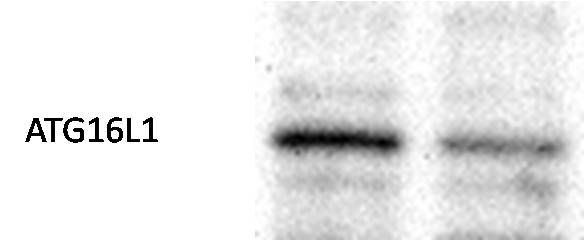 |
